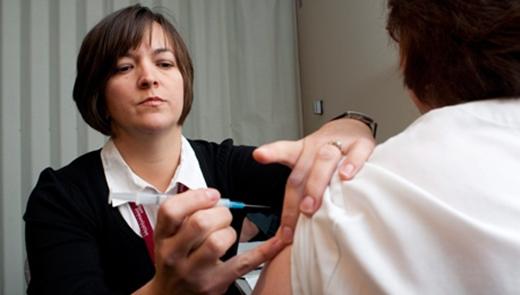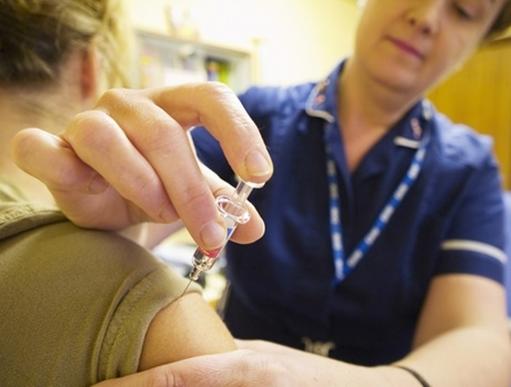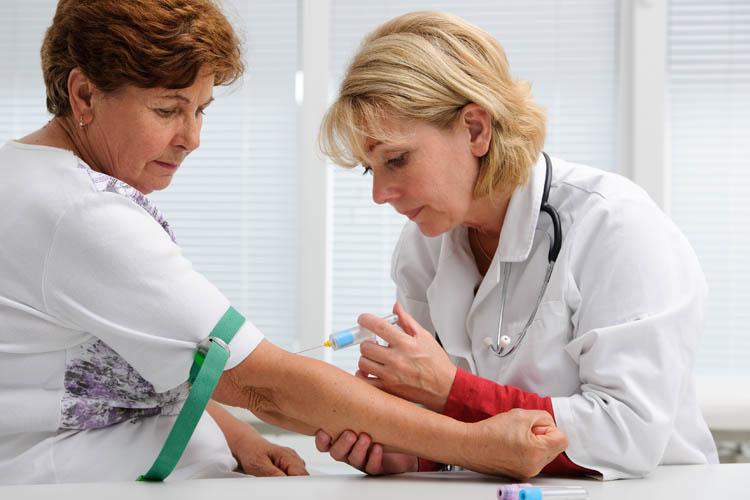Health Care Workers (HCWs) have an increased risk of most vaccine preventable diseases and
may transmit infections to susceptible patients or people in their care. HCWs are defined as all
those who have contact with patients or contact with blood or other body substances from
patients in a health care or laboratory setting. This includes: medical, dental, nursing, allied
health, emergency health care workers (ambulance and volunteer first aid workers),
laboratory staff and mortuary workers, including all trainees and student health care
workers in these groups.
Health care workers may be exposed to, and transmit, vaccine-preventable diseases such
as influenza, measles, rubella and pertussis. Maintaining immunity in the health care worker
population helps prevent transmission of vaccine-preventable diseases to and from health
care workers and patients. The likelihood of contact with patients and/or blood or body
substances determines vaccination recommendations. Health care workers should
receive the vaccines they require before or within the first few weeks of employment, with
the exception of influenza vaccine, which should be administered annually between
March and May. You need to consult your GP to discuss your current immunisation status
and requirements depending on your individual circumstance. You can also refer to
department of health website for further information.
|
Diphtheria/Tetanus
|
Most health care workers will have received a primary course of diphtheria/tetanus
vaccine however, if in doubt, offer three doses (ADT) at one-monthly intervals.
Recommend a further dose on the 50th birthday. A pertussis-containing vaccine (dTpa)
may be used instead of ADT at 50 years of age.
|
|
|
Pertussis
|
A single booster dose (given as dTpa vaccine) is recommended for health care
workers in paediatric settings, particularly maternity and neonatal settings.
|
|
|
Varicella (chickenpox)
|
A history of chickenpox is strongly predictive of prior infection (>90 per cent).
Consider serological screening of people with no definite prior history of chickenpox
(approximately 50 per cent of this group will be susceptible). Document results of testing.
All non-immune direct care staff (see above for definition) should be vaccinated with
varicella vaccine. Two doses of vaccine at least one month apart are required for adults.
|
|
|
Hepatitis B
|
A course of three doses of vaccine to all health care workers. Perform post-vaccination
serological testing one month after the third dose of vaccine. If adequate anti-HBs
antibodies are not reached following the third dose, the possibility of HBsAg carriage
should be investigated. Those who are HBsAg negative and do not respond should be
offered either a further double dose or a further three doses at monthly intervals of
hepatitis B vaccine. Further testing should be performed four weeks later. Persistent
non-responders should be informed about the need for HBIg within 72 hours of parenteral
exposure to hepatitis B.
Booster doses of hepatitis B vaccine are no longer recommended for people who have an
adequate antibody response to the primary course, as there is good evidence that a primary
course provides long lasting protection.
|
|
|
Hepatitis A
|
Staff at higher risk of occupational exposure to hepatitis A includes nursing staff and
other health care workers in contact with patients from Indigenous communities, in
paediatric wards, infectious disease wards, emergency rooms and intensive care units
or who frequently attend patients in rural and remote Indigenous communities.
|
|
|
Measles, mumps, rubella
|
Document at least two doses of a measles-containing vaccine for all staff born since 1966.
Those born prior to 1966 are considered immune.If in doubt, offer two doses of MMR
vaccine a minimum of one month apart.
|
|
|
TB
|
- High risk workers include all staff working in respiratory clinics and
laboratories and specific tuberculosis treatment areas; staff working in intensive care,
emergency departments, and bronchoscopy theatres; all those who regularly work with TB
or HIV positive patients; laboratory staff exposed to potential tuberculous material;
mortuary staff and all immunocompromised health care workers.
- Medium risk workers include other medical and nursing staff, physiotherapists,
radiographers, paramedical and ambulance staff and students involved in direct patient
care, non-clinical staff in regular close contact with patients and community nurses
working with at-risk groups.
- Low risk staff are those not routinely exposed to patients or their clinical specimens,
for example, kitchen staff, administration and clerical staff.
All medical, nursing, general ward, pathology, radiology, dental, mortuary and
paramedical hospital staff should have their TB status determined pre-placement,
unless they have documentation of a positive test, adequate treatment for disease or
infection or a negative test within the previous three months.
The frequency of periodic TB screening depends on the risk categories of the facility
and the worker. Screen negative health care workers in high risk settings annually.
Negative workers in medium risk settings require screening every two years unless the
risk of infection is shown to be less than 1 per cent per annum. Health care workers in
low risk settings need not be routinely screened during employment.
All health care workers should have an exit test of TB status on completion of employment
at each health care institution.
BCG vaccination is no longer routinely recommended for Victorian health care workers,
however health care facilities should consider offering BCG to health care workers and
voluntary workers who are TB negative, where the risk of repeated exposure to infectious
TB is high and not controlled despite appropriate infection control procedures.
Use of BCG vaccination does not preclude periodic TB surveillance. Do not give BCG to
those who are HIV infected or immune-suppressed, or who are pregnant or likely to be
pregnant.
TB status in health care workers has traditionally been determined by administration
of a Tuberculin (Mantoux) Skin Test (TST). The TST is known to have a number of
limitations, including lack of sensitivity in people who have previously been
vaccinated with BCG.
|
|












